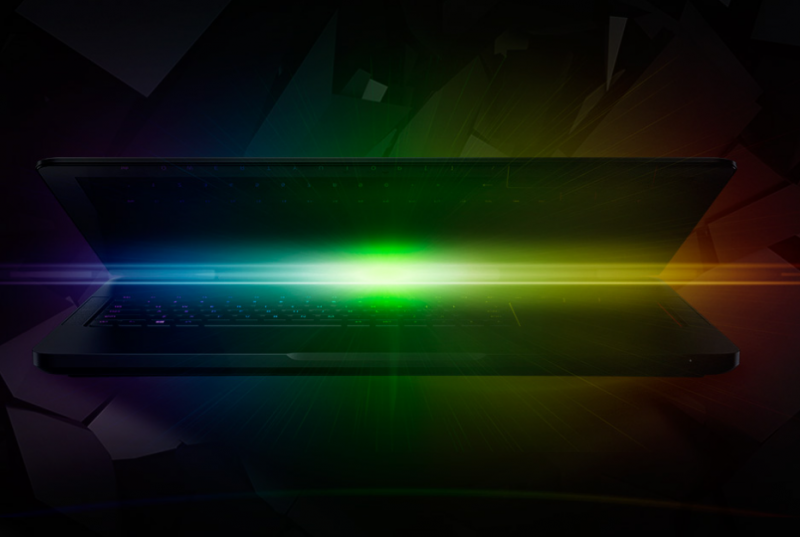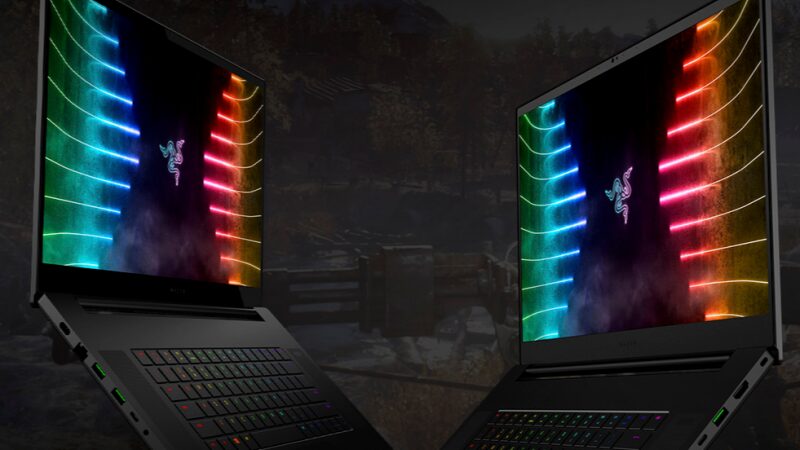The Razer Blade Pro 17 comes bearing the gift of the RTX 3000 series and completely shatters everything I know about gaming on a laptop. My primary gaming platform is PC, and previous attempts to game on the go with a laptop have left me disappointed. Not only does hardware usually go out of date fairly quickly, but I have a hard time adjusting to the smaller screen size and overall feel of laptop gaming. That being said, the Blade Pro 17 offers a much bigger screen and the performance blew my previous experiences right out of the water. This might just be the piece of equipment that makes me excited with gaming on a laptop.
The latest laptop in Razer’s growing line is compelling, and it features a stunning display to optimize any type of game. The screen performance is unparalleled, and the port options make it easy to adjust the portable computer to your whim. To test out the Razer Blade Pro 17, I ran this machine through the wringer: Destiny 2, Cyberpunk 2077, Battlefield 4, and a modded-to-oblivion Skyrim – I tried it all. Beyond gaming, I also experimented with what it was like to run a thousand tabs as I do during any usual workday while using programs like Adobe Premiere Pro, auditory software, and running a game in the background. This machine passed every test I threw at it with flying colors, but that doesn’t mean it doesn’t have a few drawbacks. Let’s talk about the pros first.
What I loved about the Razer Blade Pro 17
For $3,199, there had better be a lot of pros. Luckily, there are. I immediately loved this laptop’s size. The Blade Pro 17 is a Big Boy coming in at just over six pounds, so some may see this as a hindrance, but I couldn’t get enough. I’ve had older Blade models, but the screen sizes were uncomfortably small for my personal taste. The Pro 17 comes with a 17.3-inch screen that displays games in perfect detail with enough space to make out the tiniest of details. When playing Destiny 2 PvP, I had no problems seeing the smaller aspects of each map, an issue I had with the Blade series’ more compact counterparts. Even with its bigger size, it still lived up to the Blade name of being a thin shell to house this hardware, so while it’s not as compact as previous laptops, it’s still easy to take with you wherever your destination leads you.
To say that the specs are a little overkill would be an understatement, but my regular PC setup is pretty extra, so this was perfect. Transitioning from a game to Windows was fluid and I experienced zero stutters, lag was non-existent, and color vibrancy looked nothing short of stunning. The levels of connectivity were a huge boon for this particular model, sporting 2.5GbE ethernet access and USB3.2 Gen 2 ports. With nine inputs total; I found it easy and enjoyable to filter between objectives. From creating content to gaming, the technical setup is expertly designed to offer more than one purpose. The various inputs include:
One issue I had with previous entries in the Blade series is overheating. My previous Razer laptop went from room temperature to scalding hot in less than 10 minutes, making gaming while traveling a sweltering affair if I had limited space. The Blade Pro 17 definitely corrected that design issue with a much larger surface engineered with cooling in mind. I found this incredibly useful because when a piece of hardware overheats, the performance suffers, and that is an issue when working on projects that demand both connection and power. I’ve spent over two weeks with the Razer Blade Pro 17, and I haven’t run into any overheating issues, which is already a massive improvement. Between the surface area and the anodized matte finish to help protect from surface damage, this is a laptop I feel much more comfortable using for travel.

What could be better
As mentioned, the battery life is incredibly short. Running a moderate amount of processes, I averaged about four hours. However, when using programs like Adobe, livestreaming, or just gaming, I saw it dip as low as two. Laptops are great for being functional on the go, so this battery drain is a pretty big drawback. Pre-COVID, I would find myself on a plane every couple of weeks, sometimes on several flights in a single day. While I won’t be streaming Battlefield in the air anytime soon, the low battery life is something I wish wasn’t quite so prevalent, especially in light of the Blade Pro 17’s price point. That being said, this machine is impressively powerful, so a battery drain is expected, and I would even argue that the pros far outweigh this con.
The design of the 17 is sleek, durable, and perfect for those that are especially attached to the Razer name. The standard RGB settings were easy to use and displayed beautifully, and the sound capabilities were top-notch, laptop or not. So what’s the verdict?
Final thoughts
The Razer Blade Pro 17 is a must-have if you have the budget to spend. It’s one of the most powerful laptops on the market right now, and it blows the rest of the competition out of the water. The Blade’s RAM more than compensates for any sort of multitasking you have planned, especially content creators who do gaming livestreams. This is a great system for gaming, creative work, or livestreaming. If the price makes you wince, then this might not be the build for you for the following reasons:
- You need better battery life
- You don’t plan on playing too many demanding games
- You’re using it as just a run-of-the-mill laptop
Unfortunately, it’s pretty much impossible to get an RTX 3000 series graphics card right now unless you get one with a pre-build or a laptop like this, which might make the Blade Pro 17 a good proposition.
To learn more about the Razer Blade Pro 17, you can check out the official Razer website right here.
Game Informer
Source link
Related Post:
- Razer officially unveils the svelte AMD Blade 14 gaming laptop. About time, guys
- The new Razer Blade 14 gaming laptop packs an AMD CPU instead of Intel
- Razer CEO reveals Blade 14 as ultimate AMD gaming laptop
- Why Max Payne 3 Was The Epitome of Third Person Shooters
- Razer’s BlackShark V2 Pro gaming headset gets a splash of Rainbow Six Siege
- Get the Razer Kiyo Pro webcam for $50 off today
- Nintendo says it’s ‘always looking at new tech’, but downplays Switch Pro rumours
- Asus ROG Zephyrus G15 GA503Q gaming laptop review
- Acer Nitro 5 gaming laptop review
- Gigabyte Aorus 17X YD gaming laptop review
